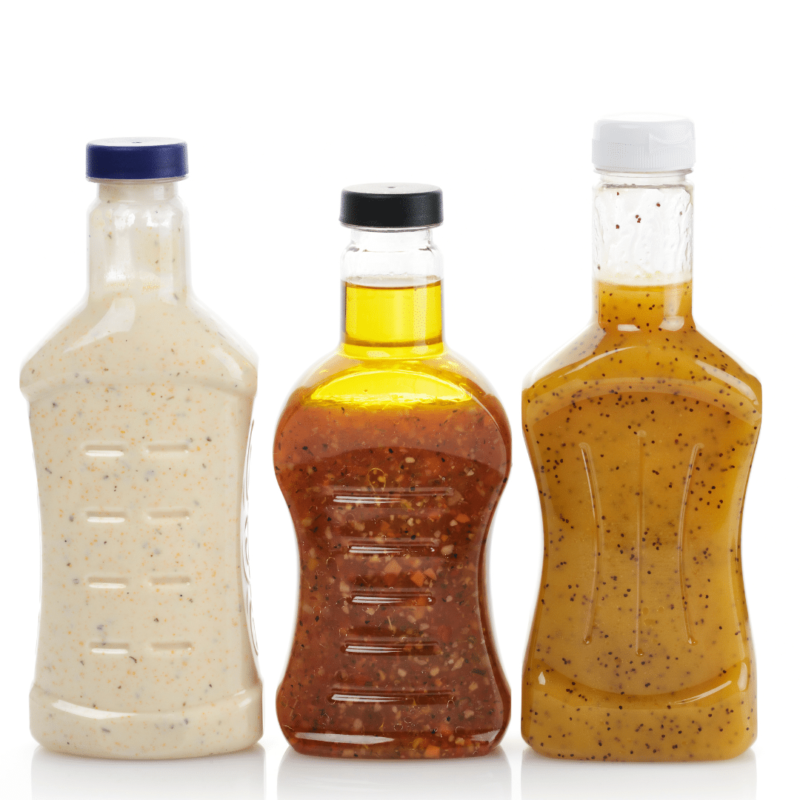Yes, that’s right. Ditch the Bottle. Salads are often seen as a symbol of health—fresh, crisp vegetables piled high and full of nutrients. But here’s the truth: even the most vibrant, colorful salad can be completely undone by one sneaky ingredient—store-bought salad dressing.
Those bottled dressings that seem so innocent (and even claim to be “healthy,” “light,” or “organic”) are often the very reason your salad isn’t as nourishing as you think. In fact, many commercial dressings are loaded with ingredients that can work directly against your wellness goals.
Let’s break down why most store-bought dressings are problematic—and how easy, delicious, and empowering it is to make your own clean, nourishing version at home.
What’s Really Hiding in Store-Bought Dressings?
Despite slick marketing and appealing labels, most bottled dressings contain a cocktail of hidden ingredients that undermine your efforts to eat clean. Here’s what to watch out for:
🧪 Processed Oils
Most commercial dressings use refined oils like soybean oil, canola oil, sunflower oil, or corn oil as their base. These oils are inexpensive and have a long shelf life, but they are also:
- Highly processed using chemical solvents
- Stripped of nutrients
- High in omega-6 fatty acids, which promote inflammation when consumed in excess
Consuming too many omega-6s in relation to omega-3s can throw off your body’s natural balance and has been linked to chronic diseases including heart disease, arthritis, and obesity.
🍭 Added Sugars
Sugar in salad dressing? You bet. Sweeteners like high-fructose corn syrup, maltodextrin, brown sugar, and even “natural” sweeteners are common additives. Some dressings contain more sugar per serving than a cookie!
This is especially true for:
- “Fat-free” or “low-fat” versions (which use sugar to boost flavor)
- Sweet vinaigrettes (like raspberry or honey mustard)
- Barbecue, French, and Asian-inspired dressings
🧂 Excess Sodium
Sodium is necessary in small amounts, but many store-bought dressings contain up to 300 mg of sodium per tablespoon. That adds up fast—especially when most people use 2 to 4 tablespoons on their salad without even realizing it.
🧬 Preservatives & Additives
To stay “fresh” on shelves for months or even years, bottled dressings are often filled with:
- Preservatives (like EDTA and potassium sorbate)
- Emulsifiers and thickeners (like xanthan gum or carrageenan)
- Artificial flavorings or “natural flavors” (which can mean anything)
These additives may affect gut health, contribute to bloating or inflammation, and provide zero nutritional value.
Why Homemade Dressings Are a Game Changer
Here’s the good news: Making your own salad dressing is simple, quick, and rewarding. When you make your own, you control every ingredient. You choose:
- Fresh, high-quality oils
- Wholesome acids (like vinegar or citrus)
- Natural flavorings from herbs, garlic, mustard, or spices
- Optional sweeteners—in the amount you want
And most importantly—you skip all the junk.
💡 Bonus: Homemade dressings are often cheaper, fresher, and more flavorful than anything you’ll find in a bottle.
Your DIY Dressing Formula: No Recipe Required
Once you get the basics down, you can mix and match ingredients endlessly to suit your taste.
🥄 Basic Vinaigrette Formula
3 parts oil + 1 part acid + seasoning
Example:
- 3 tablespoons extra virgin olive oil
- 1 tablespoon red wine vinegar
- 1 teaspoon Dijon mustard
- ½ teaspoon honey (optional)
- Pinch of salt and pepper
Whisk it up in a bowl, or shake in a mason jar—done in under a minute.
Healthy Homemade Dressing Ideas to Try
Here are a few tasty and nourishing ideas to get you started:
🥑 Creamy Avocado-Lime Dressing
- ½ ripe avocado
- Juice of 1 lime
- 1 tablespoon olive oil
- 1 garlic clove
- Salt, pepper, and cilantro
- Blend until smooth (add water for thinner consistency)
🍋 Lemon-Tahini Dressing
- 2 tablespoons tahini
- Juice of 1 lemon
- 1 tablespoon maple syrup
- 1 garlic clove, minced
- Pinch of cumin, salt, and warm water to thin
🥣 Greek Yogurt Ranch
- ½ cup plain Greek yogurt
- 1 tablespoon olive oil
- 1 teaspoon lemon juice
- Chopped fresh dill, garlic powder, onion powder, salt & pepper
These dressings double as dip, spread, or marinade—making your meal prep more flexible and flavorful.
Tips for Success
- Make in Batches: Store in a mason jar in the fridge for up to a week.
- Use High-Quality Ingredients: Good olive oil and vinegar make a huge difference in taste.
- Taste as You Go: Adjust acidity, sweetness, and salt to your personal preference.
Final Thoughts: Elevate Your Salad, Nourish Your Body
Choosing real food is a powerful act of self-care—and ditching processed dressings is one of the easiest ways to clean up your plate.
Homemade dressings:
- Reduce sugar and sodium intake
- Eliminate inflammatory oils and chemicals
- Add richness and real flavor
- Support your metabolism, digestion, and energy
Your salad deserves better. You deserve better. So toss the bottle, grab a whisk, and start dressing your meals with something that fuels you from the inside out.





